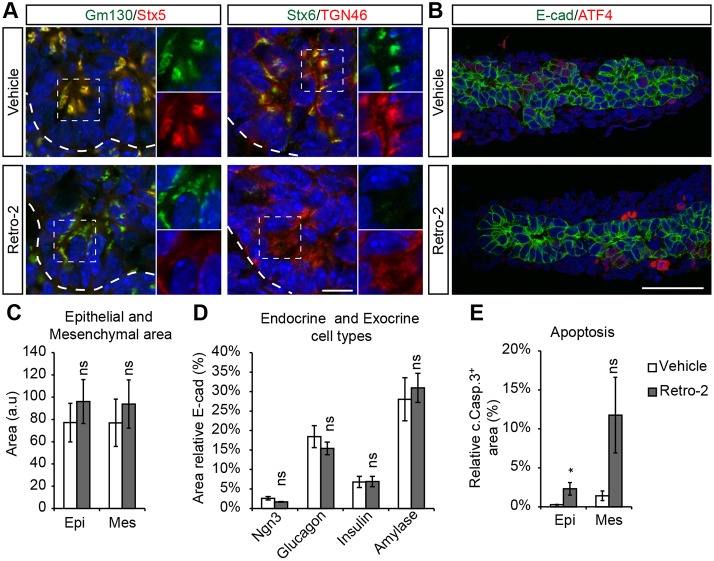Fig. 7.
Inhibition of retrograde transport by Retro-2 disrupts Golgi morphology and Stx5 distribution but allows for acinar differentiation. (A,B) Immunohistochemistry of E11.5 dorsal pancreas explants from wild-type embryos grown for 48 h and exposed to vehicle (n=4) or Retro-2 (50 µM) (n=5), using antibodies against Gm130, Stx6 and E-cad (all green), and Stx5, TGN46 and ATF4 (all red). Insets in A show magnification of green and red channels for selected areas (dashed squares). Dashed lines delineate pancreatic epithelium. Scale bars: 10 µm in A; 50 µm in B. (C-E) Quantification of total epithelial (Epi) and mesenchymal (Mes) area (C), relative endocrine (Ngn3+, glucagon+ and insulin+) and exocrine (amylase+) area (% of total E-cad+ area) (D), and relative apoptotic cell area [% cleaved caspase 3+ (c.Casp.3+) of E-cad+ epithelium (Epi) and E-cad− mesenchyme (Mes)] (E) in E10.5 dorsal pancreas explants grown for 5 days exposed to vehicle (n=8) or Retro-2 (50 µM) (n=7). Data are presented as mean± s.e.m.; *P<0.05; ns, not significant (Student's t-test).

